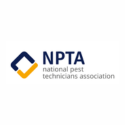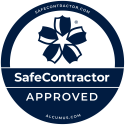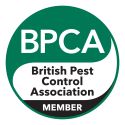If you suspect you already have a wasp nest it is best to seek professional advice. A pest control expert will have experience in wasp nest removal and will know how to get rid of the nest safely.
If the wasps nest isn’t disturbing you or posing any threat to your family or pets, it may not need to be treated at all. However, if the wasps are worrying you, are aggressive and could pose a threat to public health then it’s time to contact a professional to remove the wasp nest on your behalf.
The first step is to make sure it is a wasp nest. Wasps are often confused for bees, which must be handled differently. The most common wasps we come across are the Vespula vulgaris and German Wasps (Vespula germanica). Both have yellow and black stripes.
If you notice a lot of wasps in the area, this may be a sign of an active nest nearby. The nest itself may be difficult to spot, but you may notice some tell-tale signs such as: wasps entering and exiting from a small hole in the ground or wall; a large number of wasps flying in a particular area; or a steady stream of wasps coming in and out of a particular spot. If you notice any of these signs, it is likely that there is an active nest nearby.
You may also notice a large number of wasps flying around a particular object, such as a tree or bush. This could be a sign that the wasps are building a nest in that area. If you see this, it is important to take caution and avoid disturbing the nest, as wasps can become aggressive if they feel threatened.
Small wasp nests start to appear in early spring. This is because the queen wasp, who would have hatched earlier in the autumn, emerges from hibernation, ready to build her own nest. She will seek out a sheltered area. Typically, somewhere such as, a wall cavity, loft, eaves, shed, or garage.
The queen will start to build the nest. She will then hatch some worker wasps. At this stage the nest will be small, approximately the size of a golf ball, and it is the easiest time to treat the nest. The queen wasp will then continue to lay eggs for the rest of the season, to grow the colony.
By the time summer arrives she will be laying up to 300 eggs every day. By this time the nest will literally be buzzing with activity and could be the size of a football or larger.
It may be safe to remove a wasp nest yourself when it is very small, and the worker bees have not yet hatched. However, we don’t recommend it. To an untrained eye, it will be difficult to accurately assess the potential danger to yourself and those around you.
When under threat wasps can become aggressive, and sting. This can be extremely dangerous if you or a family member are allergic to wasp stings.
Wasp nests can often be in hard-to-reach places, making it difficult to administer a treatment safely and effectively. A Protex Pest Control expert will have the correct treatments and the correct personal protection equipment to do the job safely.
A wasp nest is made from chewed wood pulp and saliva. Its appearance is often compared to a paper mache construction.
All the Protex Pest Control Technicians are qualified to the stringent standards laid down by the British Pest Control Association (BPCA). We will safely remove the wasps nest from your property.
When you contact us, we will arrange a time slot for one of our Protex Pest Control experts to visit you. We operate in London and its surrounding areas. Our pest control expert will first confirm the nest is a wasp nest, as its important they are not confused with bees. When it’s confirmed as a wasp nest, they will then apply the appropriate treatment.
We will also advise you of any possible entry points and ways to prevent any future infestations.
Read our article here – Top tips to prevent wasps from nesting in your home.






